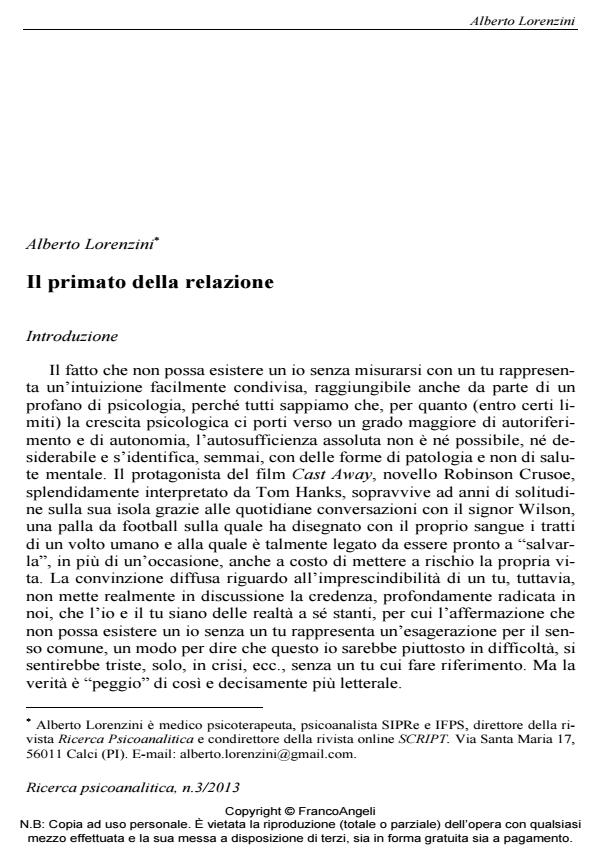The primacy of the relation
Journal title RICERCA PSICOANALITICA
Author/s Alberto Lorenzini
Publishing Year 2013 Issue 2013/3
Language Italian Pages 24 P. 109-132 File size 676 KB
DOI 10.3280/RPR2013-003007
DOI is like a bar code for intellectual property: to have more infomation
click here
Below, you can see the article first page
If you want to buy this article in PDF format, you can do it, following the instructions to buy download credits

FrancoAngeli is member of Publishers International Linking Association, Inc (PILA), a not-for-profit association which run the CrossRef service enabling links to and from online scholarly content.
There is a dialogue of me and you that we all feel as indispensable to protect our psychological integrity and that is related to our internal dialogue and to our verbal self, as Stern called it. This is a more mature organization of personality that allows us to see ourselves in certain behaviours and disavow ourselves in other ones, creating what we call free will. Consciousness is born at primary level with the emergence of the hallucinated presence described by Edelmann for vertebrate animals as a recalled present. When verbal symbols take the place of the direct evocation of primary scenes we move away from lived experience and risk alienation, but at the same time we can access a higher form of integration.
Keywords: Relation, relational dance, Edelman, birth of consciousness, primary consciousness, superior consciousness
Alberto Lorenzini, Il primato della relazione in "RICERCA PSICOANALITICA" 3/2013, pp 109-132, DOI: 10.3280/RPR2013-003007